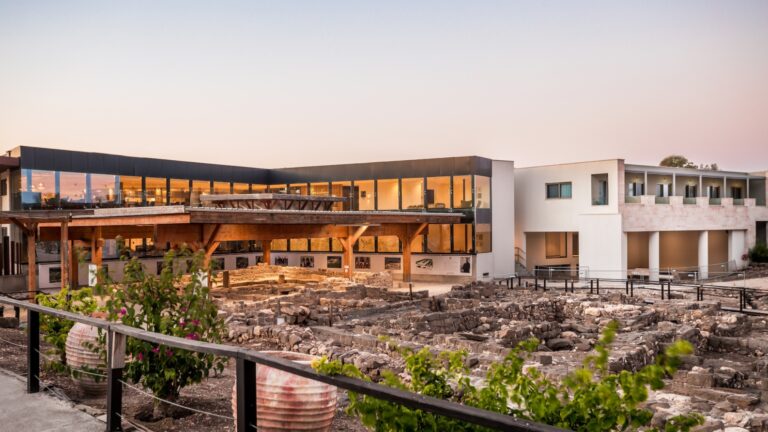About 100 years ago, the Turkish Ottoman Empire built train stations in what was then Palestine to connect with their regional network for transporting Muslim pilgrims from Damascus to Mecca.
Today, eight of those stations on the Hejaz Railway, or what’s left of them, can be found in Jaffa, Jerusalem, Haifa and beside the Sea of Galilee in the north.
While the railway hasn’t run for decades, there is growing interest to revitalize the train stations that not only tell much about the multicultural roots of the Holy Land, but also of the struggles fought to help build the modern state of Israel.
The Tzemach Station in the Galilee is next in line to get a facelift. Kinneret College, the Jordan Valley Regional Council, Israel Railways and the Council for the Preservation of Buildings and Historic Sites are investing $1 million to restore the dilapidated train station, along with its docking bay, warehouse and metal water tower.
The rebuilt train station will house classrooms for students in the Land of Israel studies program at the college, as well as students working toward tour guide certification, says historian Ze’ev Drory, managing director of Kinneret College.
Visitor and academic center
Land of Israel studies focus on the recent history of Israel, over the last 100 years or so, along with the rise of modern-day Zionism. While Israel is rich in biblical history, the last century also saw wars and conflicts worthy of academic examination, Drory believes.

The Tzemach Train Station — which lies adjacent to the back end of the college campus, a stone’s throw from the Sea of Galilee — will include a memorial to the soldiers who fell in battle there.
For instance, in 1918, an Australian Calvary appointed by the British government defeated the Germans at Tzemach. Descendants of soldiers who died in that battle will come from Australia next year for the dedication, Drory tells ISRAEL21c.
“There are more than 700,000 visitors, Israelis and foreigners, who come around this way to the Sea of Galilee every year,” he says. “We will be building a visitor’s center so that it will tell the story from the time of the First World War and Australia, and after that what happened in the Independence War. It’s about the past and the future,” he adds.
The station came under fire regularly, as it was a strategic location for various foreign forces battling for control of the region. By 1948, when Israel gained statehood, Tzemach Station was no longer in use as the railway had stopped running. The station became an army base and then an animal pound before it was left neglected.
From Mecca to Miami
The restoration project will tell the remarkable history of this little train network built to take pilgrims to Mecca. The construction, remarkably, incurred no debt and included several miles of track below sea level.

Evidence of this Ottoman train network in the Middle East can already be seen in its restored glory at the Tachana (“Station”) in South Tel Aviv, which has been transformed into a new fashion outpost and hip coffee stop for Tel Avivians.
The Tel Aviv railway took pilgrims, and also building supplies, from the Jaffa Port to Jerusalem. Like the station on the Sea of Galilee, the Tachana linked to a wider network that actually never did reach Mecca, falling short only a few hundred miles of Medina because the outbreak of World War I halted its construction.
The revitalized Tzemach Station should be ready next year for thousands of visitors passing through the Galilee region. The new renovation will also attract international students, as Drory is currently working on an archeological and history program in conjunction with the University of Miami to begin next year.
















